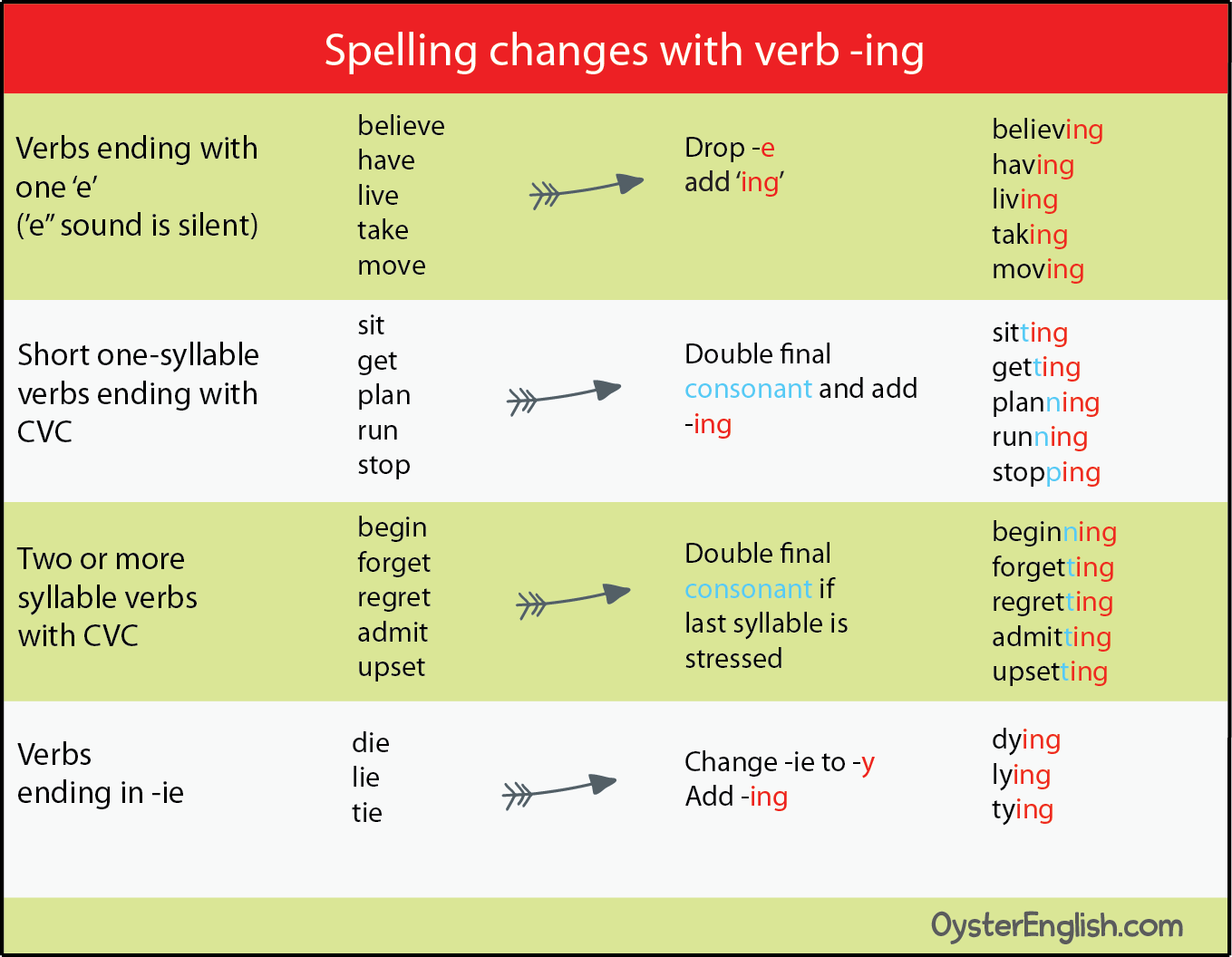
English ing spelling changes
the - ing form, the past form, and the past participle form. The. - ing ending for English verbs is used in several different situations: 1. The -ing ending is used to show the progressive. aspect (progressive / continuous verb tenses). The progressive aspect shows that an action is / was /. has been / had been / will be (etc.) in progress at a.

English ing spelling changes
Why are they added to verbs? What are verbs? And "ing" verbs? First, it's crucial to understand what verbs are. To put it simply, verbs are words that show action. Any word which denotes an action is called a verb. Some examples of verbs are run, swim, sleep, talk, walk, etc. These words show that an object is doing something.

ING Spelling rules Spelling of verbs ending in ING in English YouTube
Verbs '-ing' forms '-ing' forms Level: beginner We can use the - ing form of a verb: as a noun: I love swimming. Swimming is very good for your health. You can get fit by swimming regularly. as an adjective: The main problem today is rising prices. That programme was really boring. He saw a woman lying on the floor. - ing forms as nouns
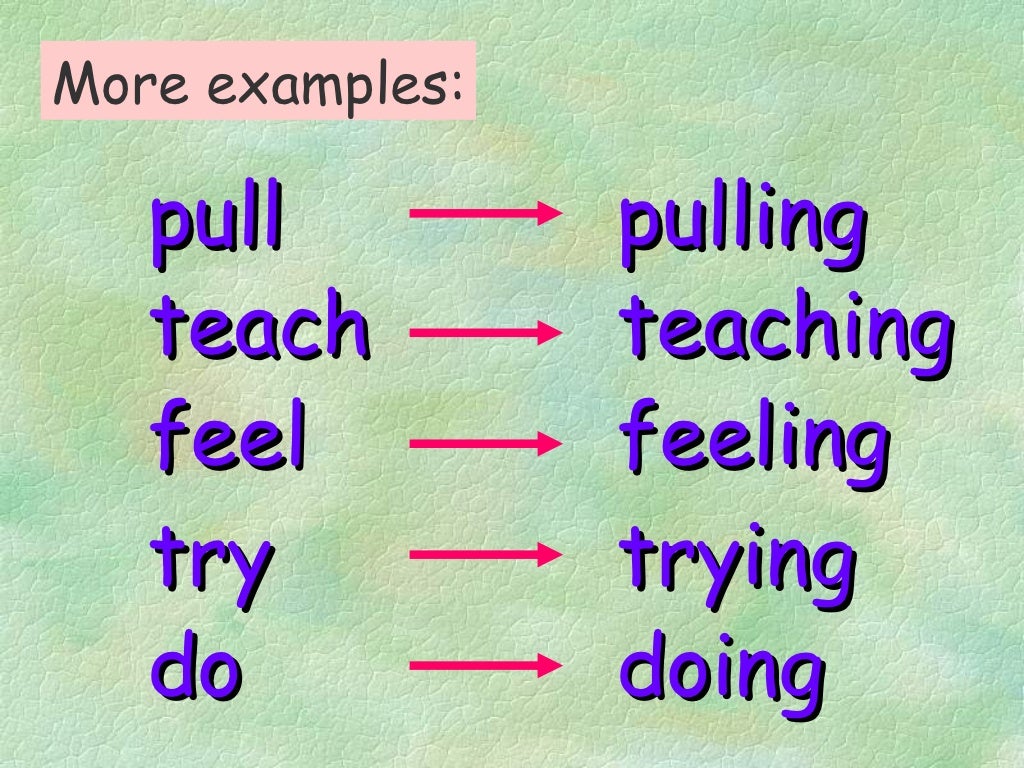
Verbs ending in ing (Present Continuous)
In English grammar, " -ing form" is a contemporary linguistic term for the present participle and gerund: any verb form that ends in -ing . In the book International English Usage (2005), Hancock and Todd note that the term " -ing form" is "neutral as to the function of a verb-derived -ing form." Examples and Observations

Verbs Ending In Ing Worksheets Worksheets For Kindergarten
For many verbs we make the ING form by simply adding -ING to end of the verb. eat - eating; speak - speaking; cook - cooking; start - starting; do - doing; stay - staying; fix - fixing; try - trying; Verbs ending with -e (with the exception of verbs ending in -ee and -ie) Drop the -e and add ING.

Verb Endings (s, ed, ing) The Curriculum Corner 123
Verbs Clause structure and verb patterns Verbs followed by the '-ing' form Verbs followed by the '-ing' form Level: beginner Common verbs followed by the -ing form are: verbs of liking and disliking: detest dislike enjoy fancy hate like love I love swimming but I hate jogging. They always enjoyed visiting their friends. phrases with mind:
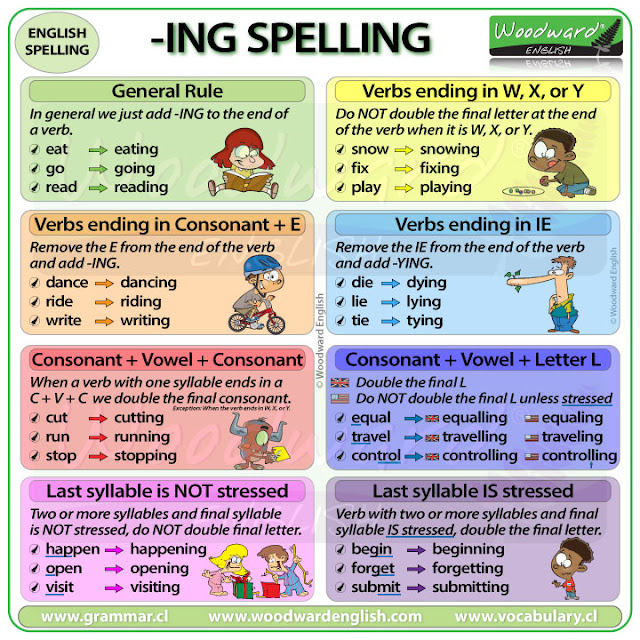
Spelling Rules ING Effortless English
So, these three expressions; 'be used to,' 'be accustomed to,' and 'adjust to' are also followed by the -ING form of the verb. Finally, we have some phrasal verbs. Phrasal verbs that end in 'to' can also be followed by the -ING form. The two most common ones are probably look forward to and get around to.
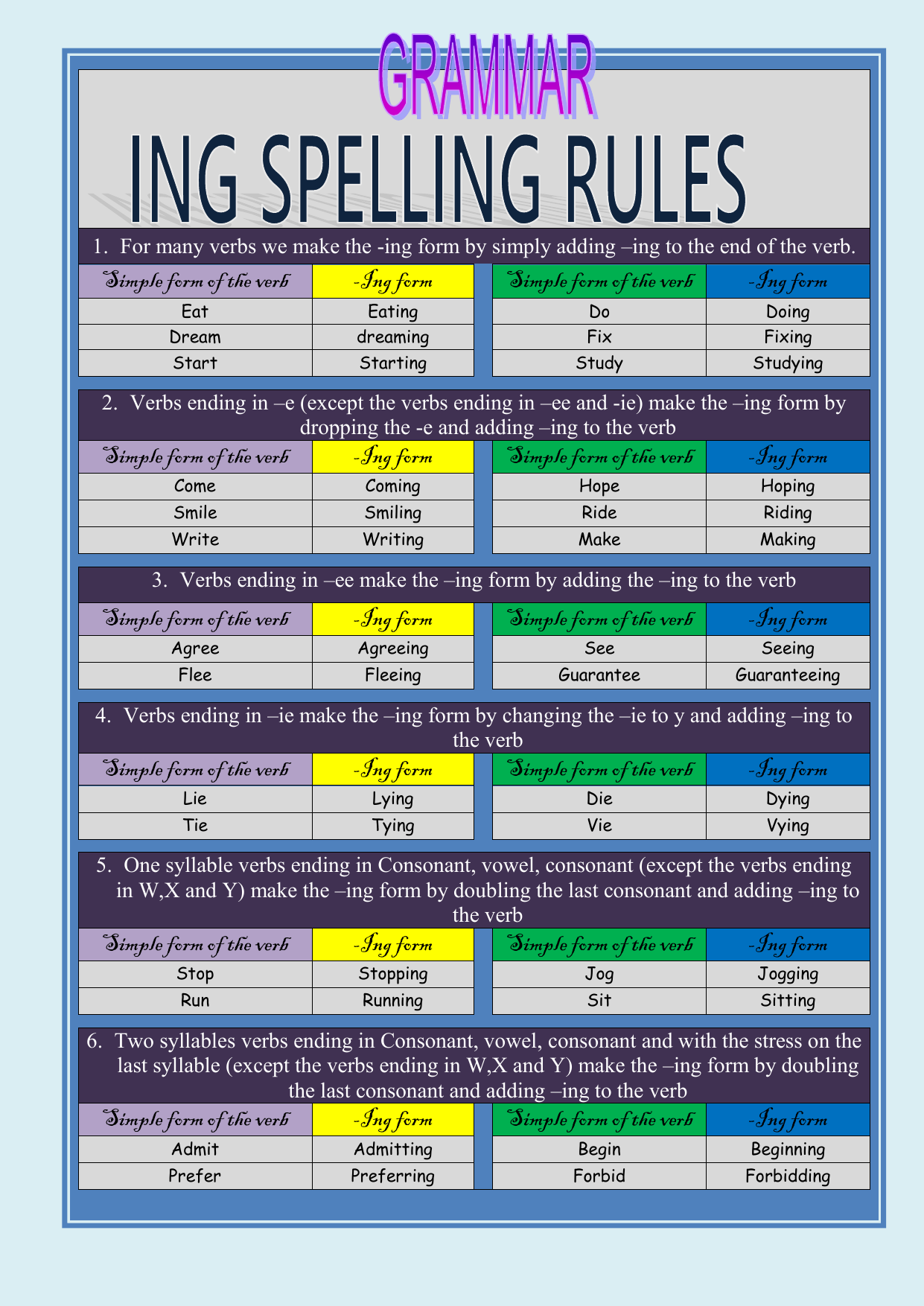
ing rules
The progressive is the verb form we use to show current ongoing action or action that hasn't been completed or action that is not necessarily ongoing at the moment we read about it but ongoing in the sense that it happens regularly.

Verb ing spelling rules examples Spelling rules, Teaching english, Teaching spelling
After some verbs use of another verb both infinitive and with ending -ing is possible. It does not affect the meaning of a sentence: verb. example. like. I like watching / to watch TV in the evening. hate. She hates getting up / to get up early. love.
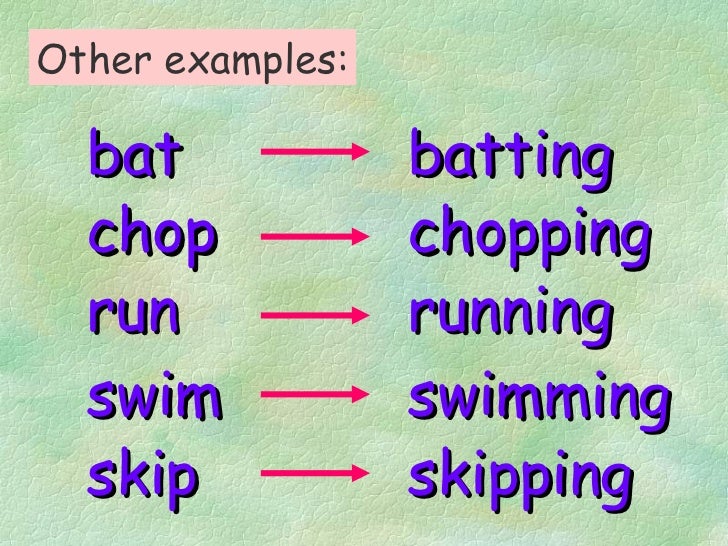
Verbs ending in ing (Present Continuous)
Find verb, test if -ing is describing a noun, and if not then you have a gerund. [Boxing] is a [challenging] sport. <-- sentence with both a gerund -ing, and an adjective -ing. And so if the Adjective and the Gerund/Noun Phrase tests have failed, then you have a verb. Just in case test it: 3a. Verb -ing usually is either a combination of a verb.

Present Continuous Spelling Rules Useful ING Rules • 7ESL
To answer the original question: Yes, gerunds all end with -ing, simply by definition. A gerund is, in Latin, a form of the verb which can be construed as (i.e. has functional characteristics of) a noun - it can act as subject or object of a verb, for example, or can take a plural ending.
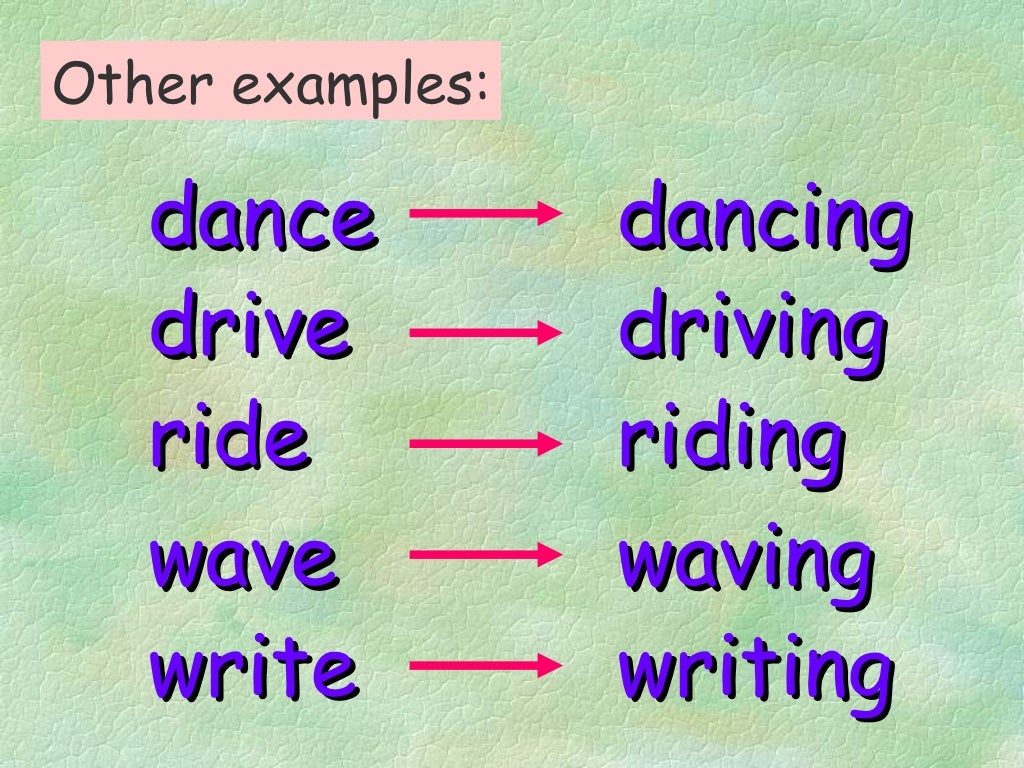
Verbs ending in ing (Present Continuous)
The final word in the title of the Bob Dylan song "The Times They Are a'Changin" is an example of a-verbing. Columbia Records. A-verbing is a form of the verb (usually the present participle) in which the base is preceded by the prefix a- . The term a-verbing was introduced by Walt Wolfram and Ralph W. Fasold in The Study of Social Dialects in.

Verbs ending in “ing” YouTube
1. do one's shopping 2. do one's shopping at; do business with; be a customer or client of More Definitions → More Definitions → More Common Verbs → 368 more 6-Letter Verbs Ending With ING → 1733 more 7-Letter Verbs Ending With ING → 2407 more 8-Letter Verbs Ending With ING → 3055 more 9-Letter Verbs Ending With ING → adpressing advocating
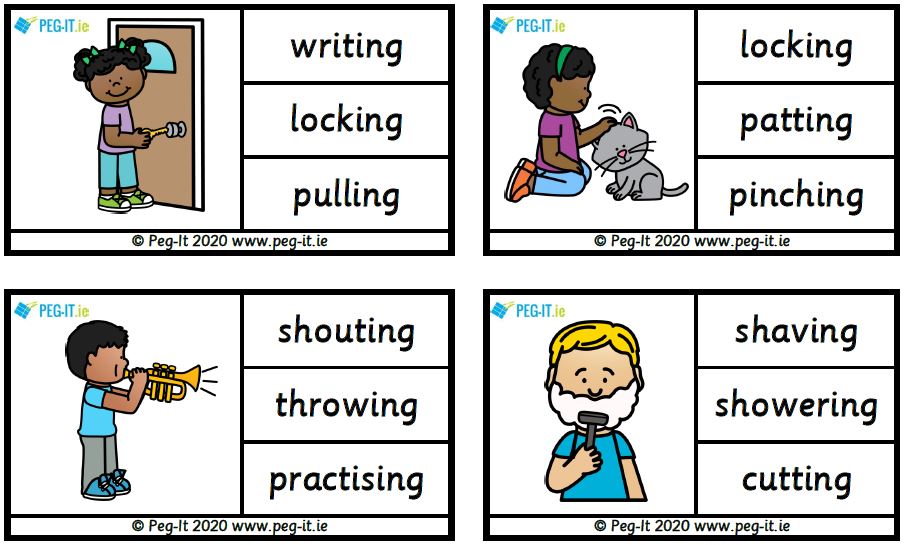
ing Verbs Peg IT
They are both correct. Verbs followed by to + infinitive form When want, learn and offer are followed by another verb, it must be in the to + infinitive form. I want to speak to the manager. She's learning to play the piano. He offered to help us wash up.

Speech Therapy with Miss Nicole ING verbs
A verb ending in -ing is either a present participle or a gerund. These two forms look identical. The difference is in their functions in a sentence. Present participles A present participle is most commonly used as part of the continuous form of a verb, after verbs of perception, after verbs of movement, or as an adjective.
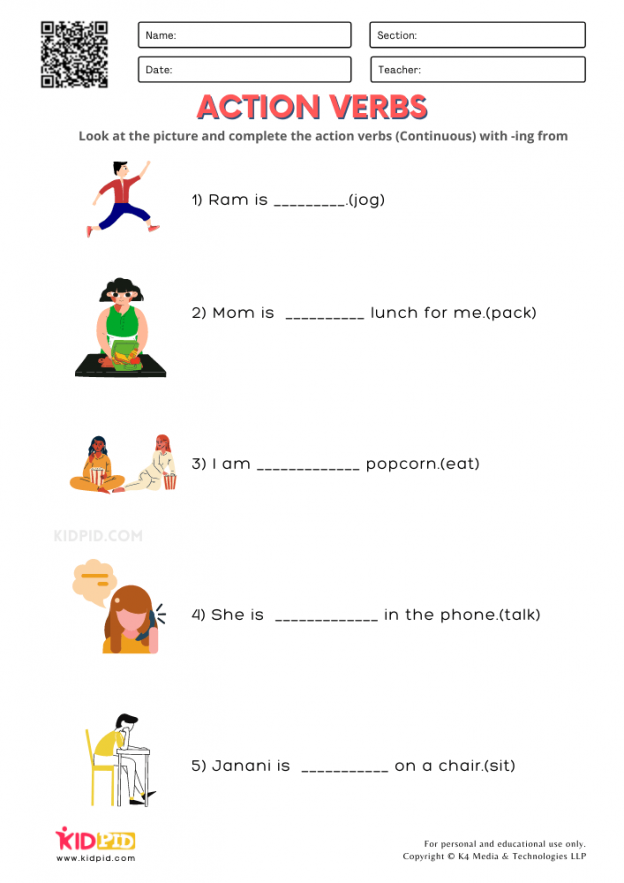
Action Verbs ending in "ing" Printable Worksheets for Grade 1 Kidpid
For verbs that end with one -e, drop the -e and add -ing. Note that these verbs the -e sound at the end is silent. (e.g., believe, bake, take, move). achieve — achieving mate — mating live — living take — taking strike — striking bike — biking make — making have — having dance — dancing But: